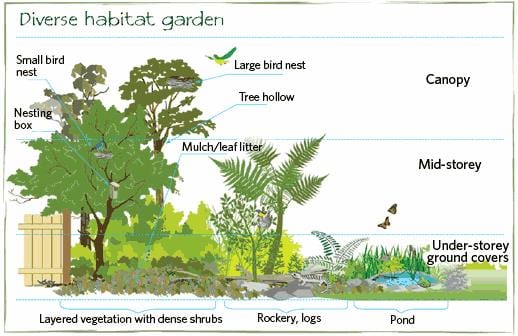About Hilton Head Landscapes
About Hilton Head Landscapes
Blog Article
Little Known Questions About Hilton Head Landscapes.
Table of ContentsThe smart Trick of Hilton Head Landscapes That Nobody is Talking AboutHilton Head Landscapes Can Be Fun For AnyoneWhat Does Hilton Head Landscapes Mean?Not known Incorrect Statements About Hilton Head Landscapes Little Known Facts About Hilton Head Landscapes.Examine This Report about Hilton Head LandscapesHilton Head Landscapes - An Overview
Line develops all types and patterns and can be made use of in a selection of methods in the landscape. Line in the landscape is created by the edge in between 2 products, the rundown or silhouette of a kind, or a long straight feature. Lines are a powerful device for the developer since they can be used to produce an unlimited variety of forms and kinds, and they manage activity of the eye and the body.

Lines can have several attributes, such as those defined listed below, but they generally serve different purposes. Number 1. Lines in the landscape - landscapers in bluffton sc. The properties of lines figure out exactly how individuals reply to the landscape, both emotionally and literally. Straight lines are structural and powerful; they develop a formal personality, are typically connected with an in proportion design, and lead the eye straight to a prime focus.
See This Report about Hilton Head Landscapes
Curved lines create an informal, natural, unwinded character that is linked a lot more with nature and unbalanced equilibrium. Bent lines relocate the eye at a slower speed and include enigma to the room by developing surprise sights.
Vertical lines in the landscape include high, slim plant product, such as trees, or high frameworks, such as an arbor or a bird home on a pole. Horizontal lines move the eye along the ground plane and can make a space really feel bigger. Low lines are extra restrained and develop a sensation of rest or repose.
Hilton Head Landscapes Things To Know Before You Buy
Reduced lines are developed by low garden walls, sidewalks, and short hedges. Lines are made use of to draw kinds on a strategy. In plan view, they specify plant beds and hardscape locations. Lines are additionally developed by the upright forms of built functions and plant material. There are 3 main line types that develop type in the landscape: bedlines, hardscape lines, and plant lines.
Bedlines attach plant product to your house and hardscape since the eye follows the line, relocating the look with the landscape. Hardscape lines are developed by the edge of the hardscape, which delineates the constructed framework. Line can also be created by long and narrow materials, such as a fence or wall surface.
Fascination About Hilton Head Landscapes
Form is located in both hardscape and plants, and it is normally the dominant visual aspect that spatially arranges the landscape and usually determines the style of the yard. The kind of structures, plant beds, and garden accessories additionally identifies the total kind style of the garden. Official, geometric types consist of circles, squares, and polygons.
Plants develop form in the garden with their lays out or silhouettes, but type can additionally be defined by a gap or unfavorable room between plants - bluffton landscaping (https://fliphtml5.com/homepage/yoptk/stevenagonzales/). Circles can be cycles, or they can be separated into half circles or circle sections and combined with lines to develop arcs and tangents
The 10-Second Trick For Hilton Head Landscapes
Circles can also be extended right into ovals and ellipses for more selection and rate of interest. Circles are a solid design type because the eye is constantly drawn to the center, which can be utilized to emphasize a centerpiece or attach various other types. Number 2. Round forms in hardscape and yard panels.
The square form can additionally be fractional and used consistently to develop a grid pattern. Unlike circles, squares are stronger on the sides, which can be lined up or overlapped to develop unique patterns and even more complicated kinds.
Meandering lines typically imitate the natural course of rivers click site or streams and can be referred to as smooth lines with deeply rounded wavinesses. Twisting lines (Number 3) work well for paths, plant bedlines, and completely dry stream beds. Twisting lines can include passion and secret to a garden by leading visitors around corners to uncover brand-new sights and rooms.
The Facts About Hilton Head Landscapes Uncovered

Figure 5. Fragmented edges: tipping rocks in pathway. Kind is the most enduring quality of a plant (landscape design hilton head). https://www.kickstarter.com/profile/h1tnhdlndscps/about. Usual plant forms are well established and standardized, as type is the most regular and recognizable characteristic of plants. Form can additionally be developed via the massing of plants, where the overall mass produces a different form than a specific plant.
A very contrasting kind should be made use of with careone or 2 job well as a centerpiece, yet way too many create disorder. All-natural plant types, as opposed to over-trimmed types, should develop the mass of the composition. The relevance of total kind is much more or much less based on the watching perspectivethe type of a tree can show up fairly different to a person standing under the canopy versus watching the tree from a distance in an open area.
Hilton Head Landscapes Fundamentals Explained
Plant forms also create and specify the void or open spaces between the plants, producing either convex or scooped forms in deep spaces. High-arching tree branches typically create a concave open area under the branches, and a round canopy with reduced branches loads the space to create a convex form in the open room under the tree.

Report this page